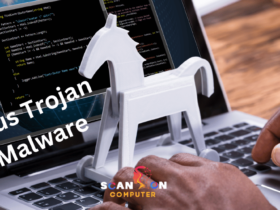Introduction: The Invisible Threat
How do you defend against a flaw no one knows exists? Zero-day attacks exploit undisclosed vulnerabilities—leaving defenders with zero days to prepare. In 2025, over 21,500 CVEs were disclosed, with 38% rated High or Critical severity, and attackers weaponize many within 24 hours of publication³. This post demystifies zero-day attacks, examines landmark incidents, and provides concrete tactics to safeguard your organization.
Defining Zero-Day Attacks
Vulnerability vs. Exploit vs. Attack
-
Zero-Day Vulnerability: A flaw unknown to the vendor or public, with no patch available².
-
Zero-Day Exploit: The code or method developed to leverage that vulnerability².
-
Zero-Day Attack: The deployment of the exploit against targets, often for espionage or sabotage².
Zero-Day Lifecycle Stages
-
Introduction: Flawed code ships unnoticed.
-
Discovery: Researchers or adversaries identify the flaw.
-
Weaponization: Proof-of-concept evolves into a full exploit.
-
Deployment: Attackers launch the exploit.
-
Vendor Awareness: The vendor learns of the vulnerability.
-
Patch Creation: A fix is developed and tested.
-
Patch Deployment: Users apply updates, closing the window for zero-day attacks².
Why Zero-Day Attacks Matter
High Success Rates & Impact
Zero-day attacks bypass signature-based defenses. In H1 2025, 1,773 CVEs were Critical (CVSS 9–10) and 6,521 High (CVSS 7–8.9)³, offering attackers a vast playground.
Fast Exploit Speed
Attackers often weaponize new CVEs within 24 hours—creating de facto zero-day conditions for organizations that haven’t patched³.
Regulatory Implications
Mandates like CISA’s Known Exploited Vulnerabilities require swift mitigation. Noncompliance can lead to fines, legal risk, and reputational damage³.
Anatomy of a Zero-Day Attack
Discovery & Weaponization
Using fuzzing, reverse engineering, and bug bounties, attackers uncover flaws and build exploits.
Delivery & Exploitation Methods
Phishing emails, watering-hole websites, and compromised software updates remain top vectors⁴.
Command & Control & Persistence
After exploitation, adversaries deploy backdoors and rootkits, leveraging registry tampering or scheduled tasks for persistence.
Real-World Examples
Stuxnet Industrial Sabotage
Exploited four Windows zero-days to manipulate Iran’s centrifuges—proving zero-days can inflict physical damage⁵.
Log4Shell Supply-Chain Risk
A remote code execution flaw in Apache Log4j library affected millions of servers, triggering the fastest global remediation effort ever⁶.
MOVEit Transfer Data Theft
CVE-2023-42793 allowed SQL injection-based RCE in MOVEit Transfer, leading to mass data exfiltration across governments and enterprises⁷.
Oracle E-Business Suite RCE
CVE-2025-61882 enabled unauthenticated remote code execution in Oracle E-Business Suite—a stark reminder that enterprise apps remain vulnerable⁸.
PrintNightmare Windows Spooler
This MSRPC vulnerability permitted arbitrary code execution with SYSTEM privileges, illustrating the ongoing risk in legacy services.
Zero-Day Statistics & Trends
| Metric | Value |
|---|---|
| CVEs Reported (mid-2025) | 21,500+¹ |
| High/Critical CVEs (CVSS ≥7.0) | 38% of total³ |
| Avg. Exploit Speed | <24 hours from disclosure³ |
| Top CWEs (H1 2025) | XSS, SQLi, Buffer Overflow, Broken Auth |
Defending Against Zero-Day Attacks
Defense-in-Depth Architecture
Implement layered controls: network segmentation, EDR, IPS, and micro-segmentation.
Threat Intelligence & Hunting
Subscribe to zero-day feeds (e.g., ZDI, NVD) and conduct proactive hunts for Indicators of Compromise (IoCs)⁹.
Secure Development & DAST
Adopt static (SAST) and dynamic (DAST) testing in CI/CD pipelines. Continuous DAST platforms catch runtime flaws before production.
Patch Management & Virtual Patching
Automate patch orchestration for critical systems and employ virtual patching via WAF or IPS when vendor fixes lag¹⁰.
Key Takeaway: Zero-day attacks exploit unknown vulnerabilities before vendors can patch them, making them among the most dangerous threats. By understanding their lifecycle, real-world impact, and defense tactics—such as defense-in-depth, threat intelligence, and rapid patching—security teams can significantly reduce risk.
Table: Notable Zero-Day Incidents & Mitigations
| Incident | Vulnerability Type | Mitigation |
|---|---|---|
| Stuxnet | Multiple Windows 0-days | ICS network isolation, anomaly detection |
| Log4Shell | Remote code execution | Immediate Log4j update, WAF blocking rules |
| MOVEit Transfer RCE | SQL injection RCE | Input validation, DB firewall rules |
| Oracle E-Business Suite | Unauthenticated RCE | Emergency patch, network ACL restrictions |
| PrintNightmare | Arbitrary code execution | Disable Print Spooler, apply security patch |
FAQs on Zero-Day Attacks
-
What differentiates a zero-day vulnerability from a typical CVE?
Zero-day vulnerabilities are unknown to vendors and lack official patches, unlike published CVEs with available fixes². -
How fast do attackers exploit new vulnerabilities?
Modern threat actors weaponize high-severity flaws within 24 hours on average³. -
Can antivirus prevent zero-day attacks?
Signature-based antivirus often fails; behavioral EDR and anomaly detection are more effective². -
Are zero-day feeds reliable?
Public databases (NVD, ZDI) provide timely advisories, while private intelligence services may deliver faster alerts⁹. -
What role does threat hunting play?
Hunting identifies stealthy zero-day intrusions by searching telemetry for suspicious patterns before alerts fire. -
How do I virtually patch zero-days?
Use WAF rules and IPS signatures to block exploit attempts at the network perimeter until official patches arrive¹⁰. -
Should I delay patching to verify stability?
Prioritize critical patches immediately; use segregated test environments and rapid rollback plans to balance risk and uptime. -
What’s the difference between DAST and SAST?
DAST tests running applications from the outside for runtime flaws, while SAST analyzes source code for vulnerabilities before compilation.
Conclusion & Call-to-Action
Zero-day attacks exploit the unknown—weaponizing flaws before defenders can react. By layering defenses, integrating threat intelligence, enforcing secure development, and accelerating patching, organizations can shrink the attack window dramatically.
Act now: implement a defense-in-depth strategy, subscribe to zero-day advisories, and automate vulnerability management. Fortify your security posture today to stay ahead of tomorrow’s unseen threats.













Leave a Reply
View Comments